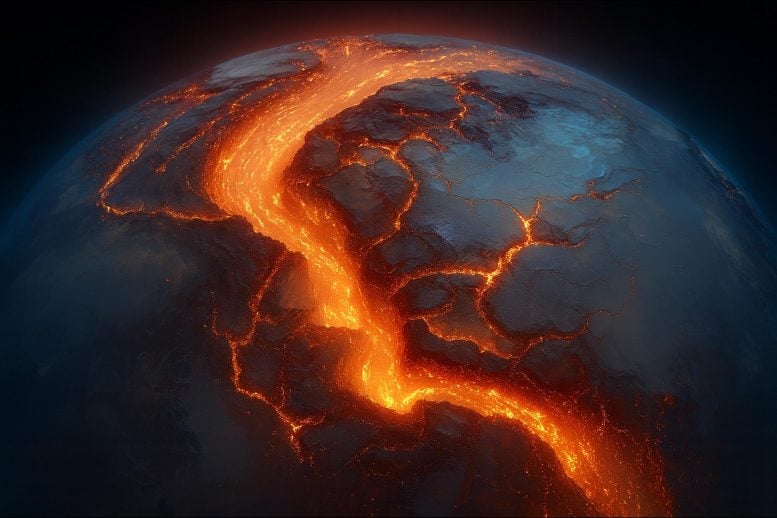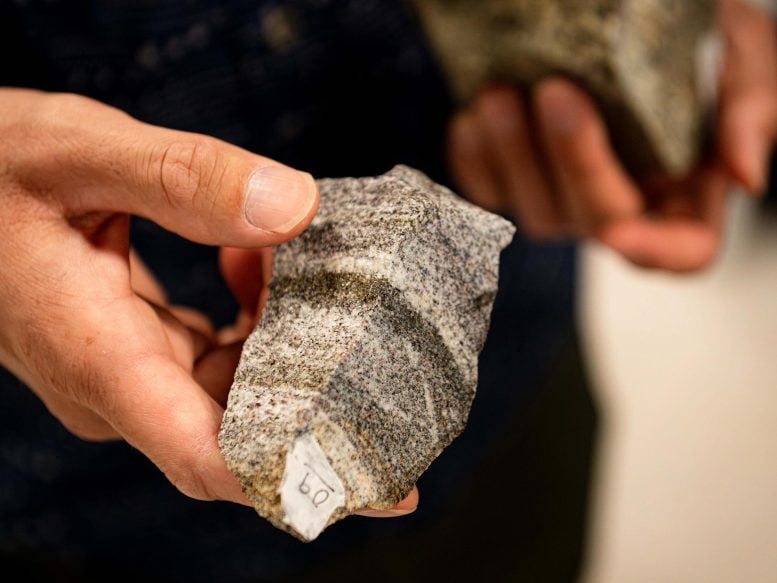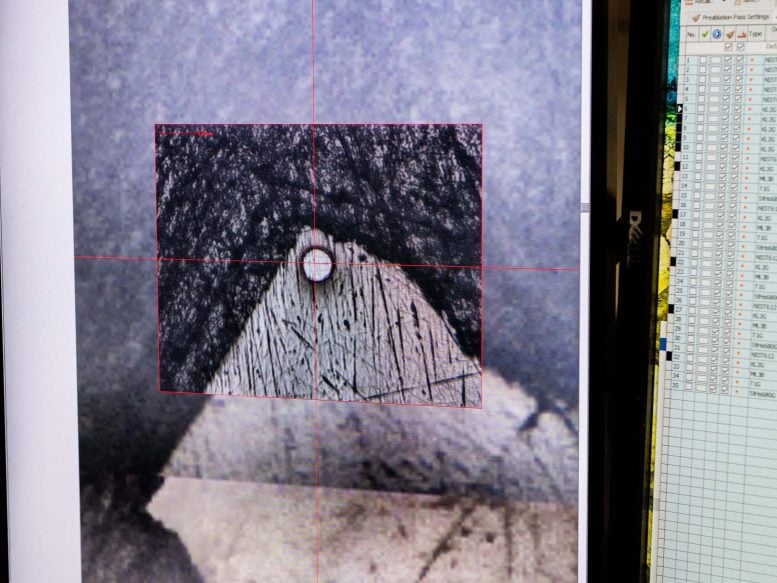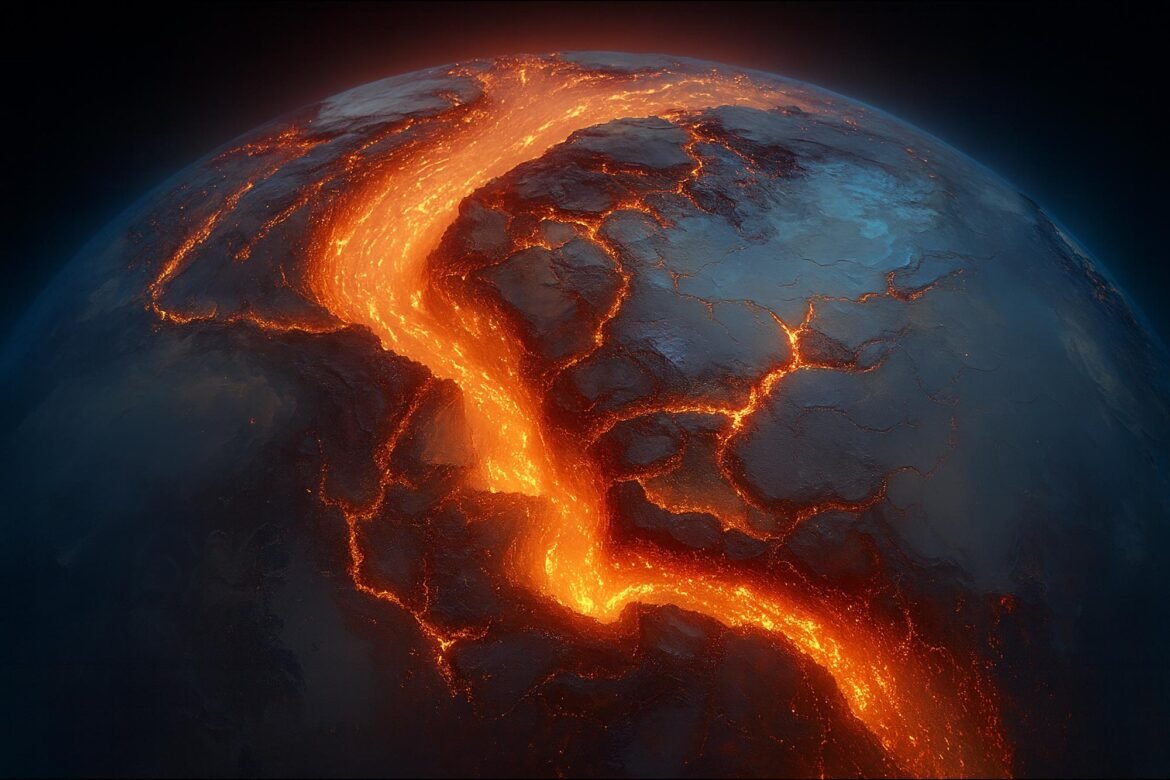Table of Contents

For billions of years, Earth’s continents have stood firm, but scientists have only now uncovered how they achieved such enduring stability.
A new study from Penn State and Columbia University shows that temperatures above 900 °C deep within the planet’s crust were essential for forging the continents. The intense heat caused radioactive elements like uranium and thorium to migrate upward, carrying heat away and allowing the lower crust to cool and solidify.
The Hidden Heat Behind Earth’s Stability
For billions of years, Earth’s continents have stood firm, forming the base for mountains, ecosystems, and human civilization. Yet, scientists have long puzzled over what makes them so enduring. Now, researchers from Penn State and Columbia University have uncovered the clearest explanation yet for this remarkable stability, and it all comes down to heat.
In findings published on October 13 in Nature Geoscience, the team showed that creating long-lasting continental crust required temperatures above 900 degrees Celsius in Earth’s lower crust. These extreme conditions caused radioactive elements such as uranium and thorium to move upward. As they decayed, these elements released heat, and by rising toward the surface, they helped carry that heat away, allowing the lower crust to cool and harden over time.

Beyond Geology: Modern Implications and the Search for Life
According to the researchers, the discovery has far-reaching implications beyond understanding Earth’s deep past. It could help guide the search for critical minerals that power today’s technologies, including smartphones, electric vehicles, and renewable energy systems, and even aid the hunt for habitable planets beyond our solar system.
The same geologic processes that stabilized Earth’s crust also transported valuable rare earth elements such as lithium, tin, and tungsten. Understanding how these elements moved billions of years ago may help scientists locate new deposits today. The researchers also believe these heat-driven processes may occur on other rocky planets, offering new clues for identifying worlds that could support life.

The Recipe for a Habitable Planet
“Stable continents are a prerequisite for habitability, but in order for them to gain that stability, they have to cool down,” said Andrew Smye, associate professor of geosciences at Penn State and lead author on the paper. “In order to cool down, they have to move all these elements that produce heat — uranium, thorium, and potassium — towards the surface, because if these elements stay deep, they create heat and melt the crust.”
Smye explained that Earth’s modern continental crust began forming about 3 billion years ago. Before that, the crust was quite different, lacking the silicon-rich composition seen today. Scientists had long suspected that the melting of older crust helped form stable continental plates, but this new research reveals that the process required far higher temperatures than previously believed.
“We basically found a new recipe for how to make continents: they need to get much hotter than was previously thought, 200 degrees or so hotter,” Smye said.
Forging Continents Like Steel
Smye compared the process to forging steel.
“The metal is heated up until it becomes just soft enough so that it can be shaped mechanically by hammer blows,” Smye said. “This process of deforming the metal under extreme temperatures realigns the structure of the metal and removes impurities — both of which strengthen the metal, culminating in the material toughness that defines forged steel. In the same way, tectonic forces applied during the creation of mountain belts forge the continents. We showed that this forging of the crust requires a furnace capable of ultra-high temperatures.”

Rock Clues from Around the World
To make their conclusions, the team sampled rocks from the Alps in Europe and the southwestern United States, as well as examined published data from the scientific literature. They analyzed whole-rock chemical data from hundreds of samples of metasedimentary and metaigneous rocks — the types of rocks that make up much of the lower crust — and then categorized the samples by their peak metamorphic temperatures, when rocks undergo physical and chemical changes while remaining mostly solid.
The researchers distinguished between high-temperature (HT) and ultrahigh-temperature (UHT) conditions. Smye and his co-author, Peter Kelemen, professor of earth and environmental sciences at Columbia University, noticed a striking consistency to the compositions of rocks that had melted at temperatures above 900 C: they had significantly lower concentrations of uranium and thorium compared to those in rocks that had undergone melting at lower temperatures.
“It’s rare to see a consistent signal in rocks from so many different places,” he said. “It’s one of those eureka moments that you think ‘nature is trying to tell us something here.’”
He explained that melting in most rock types occurs when the temperature gets above 650 °C, or a little over six times as hot as boiling water. Typically, the further into the crust you go, the temperature increases by about 20 °C for every kilometer of depth. Since the base of most stable continental plates is about 30 to 40 kilometers thick, temperatures of 900 °C are not typical and require them to rethink the temperature structure.
Earth’s Hot Past and Modern Treasure Maps
Smye explained that earlier in Earth’s history, the amount of heat produced from the radioactive elements that made up the crust — uranium, thorium, and potassium — was about double what it is today.
“There was more heat available in the system,” he said. “Today, we wouldn’t expect as much stable crust to be produced because there’s less heat available to forge it.”
He added that understanding how these ultra-high temperature reactions can mobilize elements in the Earth’s crust has wider implications for understanding the distribution and concentration of critical minerals, a highly sought-after group of metals that have proved challenging to mine and locate. If scientists can understand the reactions that first redistributed the valuable elements, theoretically, they could better locate new deposits of the materials today.
“If you destabilize the minerals that host uranium, thorium, and potassium, you’re also releasing a lot of rare earth elements,” he said.
Reference: “Ultra-hot origins of stable continents” by Andrew J. Smye, and Peter B. Kelemen, 13 October 2025, Nature Geoscience.
DOI: 10.1038/s41561-025-01820-2
The U.S. National Science Foundation funded this research.
Never miss a breakthrough: Join the SciTechDaily newsletter.
Follow us on Google, Discover, and News.


